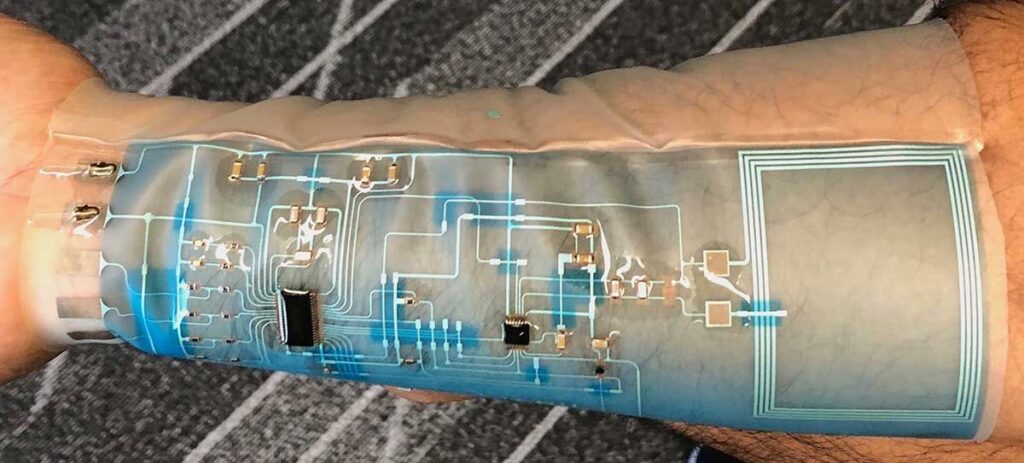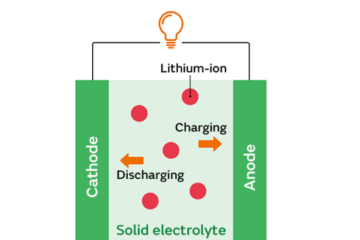Flexible Electronics: The Rise of Bendable and Stretchable Materials

Flexible electronics represent a revolutionary leap in the field of technology, providing a paradigm shift from rigid and conventional electronic devices to materials that can bend, stretch, and conform to various shapes. This transformative advancement has been made possible by developing innovative materials, manufacturing techniques, and design concepts. This article will delve into the landscape of flexible electronics, providing an overview of its core principles and discussing the profound significance of bendable and stretchable materials in the contemporary technological era and future trends. Let’s dive deep into the domain.
What is Flexible Electronics?
Flexible electronics refer to electronic devices and systems that utilize materials with intrinsic flexibility, allowing them to bend, stretch, and conform to various shapes without compromising their functionality. Unlike conventional rigid electronic components built on silicon, flexible electronics leverage materials that can undergo mechanical deformations, enabling them to adapt to unconventional form factors. Key components of flexible electronics include flexible displays, sensors, and other electronic modules that can conform to unconventional shapes.
Flexible electronics encompass various components and devices, including:
- Flexible Displays: These screens can bend or fold, providing new possibilities for portable devices like smartphones and tablets. Foldable and rollable displays are examples of how flexible electronics are reshaping the design of electronic screens.
- Wearable Technology: Flexible electronics play a crucial role in the development of wearable devices. Flexible sensors and circuits integrated into clothing or accessories allow for comfortable and discreet monitoring of health metrics, fitness, and other personalized data.
- Flexible Circuits and PCBs (Printed Circuit Boards): These electronic circuits can be bent or twisted, enabling them to fit into unconventional spaces or form factors. Flexible circuits are often used in applications where traditional rigid circuit boards are impractical.
- Stretchable Electronics: Some flexible electronics are designed to bend and stretch. This is particularly useful in applications where the electronic components need to conform to dynamic and changing shapes, such as in medical devices or electronic skin.
- Rollable and Foldable Electronics: Devices that can be rolled up or folded, such as rollable keyboards or foldable smartphones, are made possible through flexible electronic components.

Advancements in Flexible Electronics
A. Flexible Displays
Flexible displays represent a groundbreaking advancement in electronic materials, offering a departure from traditional rigid screens and opening up new possibilities for the design and functionality of electronic devices.
The journey of flexible display technology has witnessed significant strides, driven by a continuous pursuit of innovation in materials and manufacturing processes. Flexible displays emerged as a response to the demand for more versatile and adaptable electronic devices. The evolution can be outlined through key milestones:
- Early Developments: The initial stages focused on developing flexible substrates and materials, allowing displays to withstand bending without compromising performance. This paved the way for the creation of rollable and foldable screens.
- Emergence of Organic Materials: Integrating organic materials, such as organic light-emitting diodes (OLEDs), was crucial in advancing flexible display technology. OLEDs offer flexibility, vibrant colors, and improved energy efficiency compared to traditional display technologies.
- Innovations in Manufacturing: Advanced manufacturing techniques, including roll-to-roll processes and 3D printing, have been employed to produce flexible displays on a large scale. These techniques enhance production efficiency and reduce costs, making flexible displays more commercially viable.
- Foldable Display Revolution: In recent years, foldable displays have been introduced in smartphones and tablets. This innovation allows users to transform larger screens from compact, portable devices seamlessly between different form factors.
B. Wearable Technology
Wearable technology represents a dynamic and rapidly evolving field that leverages flexible electronic materials to create devices seamlessly integrated into our daily lives. The last decade has witnessed explosive growth in wearable devices, shifting from traditional gadgets to smart, connected accessories that provide users with personalized and real-time data. The growth of wearable technology can be attributed to several factors:
- Miniaturization and Portability: Advances in flexible electronic materials have enabled the miniaturization of electronic components, making it possible to embed sensors, processors, and displays into compact, wearable form factors.
- Sensor Technology: Wearable devices have various sensors, including accelerometers, gyroscopes, heart rate monitors, and GPS trackers. These sensors, often made from flexible materials, allow wearables to collect diverse data points, providing valuable insights into users’ activities and health.
- Connectivity: Wearable devices are designed to be seamlessly connected to smartphones and other devices, creating an interconnected ecosystem. This connectivity enhances the functionality of wearables, allowing users to receive notifications, track data, and sync information across multiple platforms.
- Health and Lifestyle Awareness: The increasing awareness of personal health and lifestyle has fueled the demand for wearables. Users are drawn to devices that can monitor various health metrics, track physical activity, and provide insights into overall well-being.
Potential Impact on Industries
A. Consumer Electronics
Integrating flexible displays into smartphones and tablets represents a paradigm shift in consumer electronics, offering users a new level of flexibility and interaction with their devices. The use of flexible displays in these devices allows manufacturers to explore innovative designs and functionalities:
- Foldable Smartphones: The introduction of foldable smartphones showcases the integration of flexible displays, enabling users to unfold larger screens from compact devices. This innovation enhances the user experience and provides a practical solution for portability and multitasking.
- Rollable Screens: Some consumer electronics companies are experimenting with rollable displays, allowing screens to be expanded or rolled up based on user preferences. This flexibility in display size provides users with customizable viewing experiences.
- Enhanced Durability: Flexible displays contribute to the durability of smartphones and tablets. The ability to absorb impact and bend without breaking reduces the risk of screen damage, offering consumers a more robust and resilient device.
B. Healthcare
The application of flexible electronics in medical devices is transforming the healthcare industry, offering improved patient care, diagnostics, and monitoring. Key advancements include:
- Wearable Medical Devices: Flexible electronics enable the development of wearable medical devices that patients can comfortably wear. These devices monitor vital signs, track health metrics, and provide real-time data to healthcare professionals.
- Smart Implants: Flexible electronic materials are used to create smart implants for continuous health monitoring. These implants can be integrated into the body to monitor conditions such as glucose levels for diabetic patients or assist in rehabilitation.
- Diagnostic Tools: Flexible sensors and circuits enhance the development of diagnostic tools that can conform to the human body. This flexibility improves the accuracy and efficiency of diagnostic processes, allowing for more personalized and non-invasive healthcare solutions.
C. Fashion and Textiles
The fusion of smart fabrics and flexible electronics is revolutionizing the fashion and textiles industry, giving rise to innovative and interactive clothing:
- Conductive Textiles: Flexible electronic materials are integrated into textiles, creating conductive fabrics that transmit signals. This allows for directly embedding sensors, LEDs, and other electronic components into clothing.
- Biometric Clothing: Smart fabrics with flexible electronics enable the development of biometric clothing that can monitor physiological signals such as heart rate, body temperature, and muscle activity. This provides users with personalized insights into their well-being.
- Adaptive Clothing: Flexible electronic materials create adaptive clothing that can change properties based on environmental conditions or user preferences. For example, clothing with flexible displays can alter its appearance or display dynamic patterns.
Challenges
A. Durability and Longevity
- Material Wear and Fatigue: Flexible electronic materials are often subjected to repeated bending, stretching, and flexing. Over time, this mechanical stress can lead to wear and fatigue in the materials, potentially causing degradation in performance or failure. Ensuring the durability of flexible electronics requires the development of materials that can withstand many flexing cycles without compromising their structural integrity.
- Environmental Factors: Flexible electronics may be exposed to various environmental conditions, including temperature variations, humidity, and chemical exposure. These factors can contribute to material degradation and impact the overall durability of flexible devices. Developing materials resistant to environmental stressors is essential for ensuring the longevity of flexible electronics.
- Integration with Other Components: Integrating flexible electronic components with rigid elements, such as batteries or traditional circuitry, poses challenges in maintaining overall flexibility. Ensuring that all components within a flexible device can withstand mechanical stress without compromising functionality is a complex engineering task.
- Wearables and Skin Contact: Durability is crucial for wearable devices, especially those in direct contact with the skin. The materials must be skin-friendly, resistant to abrasion, and capable of maintaining functionality despite continuous movement and contact with the human body.
B. Manufacturing Processes
- Precision in Manufacturing: The manufacturing of flexible electronics demands high precision in printing or depositing electronic materials onto flexible substrates. Any variations in the manufacturing process can lead to defects, affecting the performance and reliability of the final product.
- Scalability: To make flexible electronics commercially viable, manufacturing processes must be scalable for mass production. Achieving consistency in large-scale production while maintaining the quality and integrity of flexible materials presents a significant challenge.
- Cost-Efficiency: Flexible electronics should be cost-effective to manufacture and compete with traditional rigid electronics. Innovations in manufacturing techniques are required to reduce production costs, making flexible electronics more accessible to a broader consumer base.
- Integration of Diverse Materials: Flexible electronics often involve integrating diverse materials, each with its own properties. Ensuring compatibility and cohesion between these materials during the manufacturing process is crucial for the overall success of flexible devices.
- Quality Control: As the complexity of flexible electronic devices increases, maintaining high-quality standards becomes more challenging. Implementing robust quality control measures is essential to identify and rectify manufacturing defects early in production.
Opportunities and Future Direction
Despite the challenges, the development of flexible electronics presents exciting opportunities that can revolutionize various industries:
- Innovation in Materials: Ongoing research into advanced materials, such as flexible substrates and conductive polymers, opens up possibilities for developing materials with enhanced durability and longevity. Innovations in material science contribute to the creation of flexible devices that can withstand the rigors of daily use.
- Advancements in Manufacturing Techniques: Continued advancements in manufacturing techniques, such as roll-to-roll processing and 3D printing, offer opportunities to improve the scalability and cost-efficiency of flexible electronics production. Streamlining manufacturing processes contributes to making flexible electronics more accessible and affordable.
- Interdisciplinary Collaboration: Collaboration between materials science, engineering, and electronics experts fosters a multidisciplinary approach to addressing challenges. Cross-disciplinary collaboration can lead to breakthroughs in developing flexible electronics and creating more robust and reliable devices.
- Diverse Applications: The versatility of flexible electronics allows for diverse applications, from consumer electronics to healthcare and beyond. Opportunities exist to explore new use cases and markets, expanding the reach of flexible electronic devices and driving further innovation.
- Sustainable Design: Developing flexible electronics aligns with the growing emphasis on sustainable technologies. Opportunities exist to create eco-friendly flexible devices by incorporating recyclable materials, reducing electronic waste, and implementing energy-efficient designs.
Conclusion
Flexible electronics have ushered in a transformative era, challenging the conventions of traditional rigid devices. From bendable displays to wearable technology, the impact of flexible electronics spans across industries, enhancing user experiences and driving innovation. These technologies have redefined electronic devices’ form factors and opened new avenues for creative design and practical applications. The ability to bend, stretch, and conform to various shapes has paved the way for more comfortable and adaptable electronic solutions, promising a future where flexibility is a cornerstone of technological evolution.
As we look to the future, the journey of bendable and stretchable materials in technology is poised for continuous growth and refinement. The challenges of durability, manufacturing complexities, and material integration drive relentless research and development. With ongoing innovations, the future of bendable and stretchable materials in technology appears bright, promising a world where devices are not just tools but dynamic, adaptable companions in our daily lives.



0 Comments